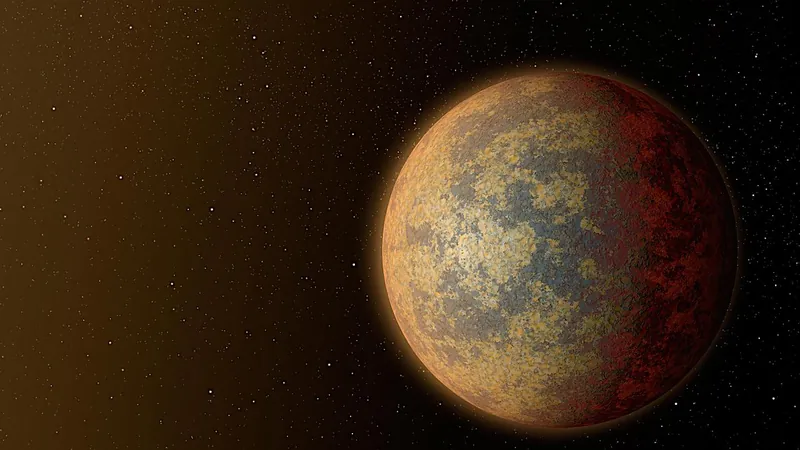
Ignan Earths: The Surprising Potential for Habitability on Extremely Heated Terrestrial Planets
2025-01-11
Author: Siti
Introduction
Could rocky planets be capable of sustaining life even under extreme internal heating conditions? A recent examination into this intriguing question points to the fascinating characteristics of certain celestial bodies, particularly drawing comparisons from our Solar System. Among the most striking examples is Io, one of Jupiter's moons, renowned for its staggering heat output of approximately 2 W—vastly higher than Earth's mere 90 mW.
The Tidal Venus Limit
The theory suggests that there's a ceiling for internal heating rates known as the Tidal Venus Limit. This threshold occurs when geothermal heat flux surpasses 300 W for Earth-mass planets, leading to conditions typical of a runaway greenhouse effect. However, it turns out there exists a spectrum of internal heating rates between Io and Tidal Venus, a range whose impacts on planetary habitability have largely remained uncharted.
The Concept of Ignan Earths
Researchers are now focusing on what are termed 'Ignan Earths.' These intriguing planets could possess a largely solid mantle despite being subjected to high internal heating, which enables the formation of a stable and convectively buoyant crust. This crust could play a critical role in sustaining surface environments conducive to life.
Climate Modeling and Surface Temperatures
By modeling the long-term climate scenarios for Ignan Earths, scientists have employed simulations of the carbonate-silicate cycle under a prevailing vertical tectonic regime, commonly referred to as heat-pipe tectonics. Such tectonics is anticipated to dominate on these exceptionally heated worlds. The findings reveal that Earth-mass planets with internal heating rates below 15 W keep average surface temperatures within the range that Earth has historically supported—under 30°C.
Moreover, even worlds with higher heat fluxes can maintain surface temperatures significantly lower than 100°C—indicative of a remarkable potential for life in environments once thought inhospitable. These revelations challenge our long-held notions about habitability and suggest that many more worlds in our universe than previously considered could be suitable for sustaining life.
Conclusion
As we continue to explore the cosmos, the concept of Ignan Earths opens new avenues for astrobiology, encouraging scientists to reassess the qualifiers for the hunt for extraterrestrial life beyond the traditional criteria we've used to evaluate habitable zones. Stay tuned as we uncover more about these extraordinary planets!
 Brasil (PT)
Brasil (PT)
 Canada (EN)
Canada (EN)
 Chile (ES)
Chile (ES)
 Česko (CS)
Česko (CS)
 대한민국 (KO)
대한민국 (KO)
 España (ES)
España (ES)
 France (FR)
France (FR)
 Hong Kong (EN)
Hong Kong (EN)
 Italia (IT)
Italia (IT)
 日本 (JA)
日本 (JA)
 Magyarország (HU)
Magyarország (HU)
 Norge (NO)
Norge (NO)
 Polska (PL)
Polska (PL)
 Schweiz (DE)
Schweiz (DE)
 Singapore (EN)
Singapore (EN)
 Sverige (SV)
Sverige (SV)
 Suomi (FI)
Suomi (FI)
 Türkiye (TR)
Türkiye (TR)
 الإمارات العربية المتحدة (AR)
الإمارات العربية المتحدة (AR)